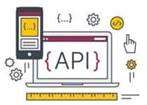Integration testing is one such sort of testing method, which tests the interfaces between the units or modules. This approach connects two or more components together that are logically compatible. As the test progresses more components are added to understand and test all the component’s functionality successfully. This approach can be further divided into a top-down approach, a bottom-up approach and a sandwich approach. It necessitates firm communication between the development and testing teams to appropriately identify and solve any issues detected during the testing procedure.

But this can create a challenge if the modules to be tested are not yet available. For example – if you want to create a battery evaluation model for an EV. The voltage data needs to be collected from a separate module to evaluate the remaining power.
Online Browser Testing
The top-down method allows the tester to write placeholders, known as stubs, for lower-level modules that haven’t been implemented yet. Since the tester knows the expected outcome of these lower-level modules, they can simply write a stub that spits out the desired output. Sandwich Testing is a strategy in which top level modules are tested with lower level modules at the same time lower modules are integrated with top modules and tested as a system. It is a combination of Top-down and Bottom-up approaches therefore it is called Hybrid Integration Testing.
It encourages engagement and cohesiveness among diverse software modules. Developers can improve their workflow by detecting and fixing integration-related errors early in development. It can aid in lowering the time and resources spent on problem repair in later phases.
What is Top down integration testing?
Integration testing is a type of testing in which software modules are logically integrated and tested as a group. A typical software project consists of several software modules written by various programmers. The goal of this level of testing is to identify flaws in the interaction of these software modules when they are combined. After the test cases and scenarios, the development team can execute integration tests. The integration tests should be run in a controlled environment to minimize the risk of impacting production systems. During integration testing, the development team should also validate the behavior of the software components when integrated into the larger system.

Even when each module of the application is unit-tested, some errors may still exist. To identify these errors and ensure that the modules work well together after integration, integration testing is crucial. The bottom-Up testing technique is a type of incremental integration testing approach implemented to evaluate the risks in the software. The most significant advantage of executing this approach is its user-friendliness which provides high deployment coverage in software development. The Incremental Testing approach involves integrating two or more modules logically related to each other and testing the application for proper operation. The other related modules are then incrementally integrated, and the process is repeated until all logically related modules have been successfully integrated and tested.
Best Practices for Integration Testing
This identification can help ensure the reliability of the software system. This is because stubs can be written more quickly than the lower-level modules they are replacing. In some cases, lower-level modules may depend on external input or even components from other teams, so it will save time to replace them with stubs when testing top-level top-down testing components. Verifying if the individual units are communicating with each other properly and working as intended post-integration is essential. When performing Bottom-Up testing, lower-level modules are tested first. It gradually moves to the higher-level modules, and so on, until all facets of the software have been thoroughly tested.
If no errors are detected, the end user should be able to successfully complete their transaction. The lower modules are then integrated and tested one at a time once the main module has passed each of its independent tests. The flight search module is first integrated and tested with the primary module. The payment module is then integrated, tested, and finally, the confirmation module.

In top down integration testing, you start from the central module that the end user would use after integrating it with other small modules. But to test this module as an independent entity, we need to have the response from the module it interacts with (the sub-modules), or else we may not be able to identify the correct behavior. Stubs are temporary replacements for modules and produce the same output as the actual products. In addition to the main module serving as a test driver, stubs are substituted for all components directly under the main control. The Integration Test Case differs from other test cases because it focuses on the modules’ interfaces and data/information flow.
- By identifying and addressing defects early in the development process, integration testing ensures the reliability and stability of software systems.
- Early and frequent testing allows the development team to fix integration issues before they escalate into bigger problems that are harder to resolve.
- It entails compiling all software modules into one structure and evaluating it as one unit.
- This test verifies that customers can correctly complete all aspects of the booking procedure, including searching for flights and making payments.
- The testing of the application will start from the crucial top-level module.
To test the data records module, you need a few things from the Profile module, and to get Profile, you need credentials, and the login has been a success. You create stubs here with the login page module not directly interacting, but the modules above can get the correct response. This restriction makes us develop a dummy code that will act on behalf of the original module without actually calling it during testing.
